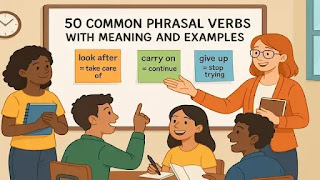What are the 50 Phrasal Verbs with Meaning and Examples?


Every year on October 16th, people around the globe come together to observe World Food Day Speech in English: 2024. This day is so much more than a celebration—it’s a wake-up call. Organized by the Food and Agriculture Organization (FAO) of the United Nations, it reminds us of the millions of people who still go hungry every day. It also pushes us to act, to ensure that everyone, no matter where they live, has access to healthy and nutritious food.
World Food Day isn’t just a one-off event. It’s a day that brings to light the reality of global hunger. In a world filled with technological marvels, where we can send people into space and develop cutting-edge medicine, it’s shocking to think that so many people still don’t have enough to eat. That’s what this day is about: raising awareness and motivating real action.
Each year, the theme for World Food Day changes, but the message remains the same—ending hunger is a fight we all must take part in. Whether it’s about reducing food waste, promoting sustainable farming, or ensuring fair food distribution, this day encourages us to look at the bigger picture and ask ourselves, "What can I do to help?"
The numbers are staggering. Over 800 million people worldwide are undernourished, meaning they don’t have enough food to lead a healthy life. At the same time, an enormous amount of food goes to waste every single day—about one-third of all food produced. It’s hard to imagine, right? While some people struggle to find a meal, tons of food are being thrown away.
This inequality is exactly what World Food Day aims to address. Hunger doesn’t just affect the body—it impacts a person’s entire life. It causes poor health, affects children’s development, and limits opportunities. Malnutrition in children can lead to stunted growth, learning difficulties, and lifelong health issues. And it’s not just about the amount of food, it’s about having access to nutritious food that meets our health needs.
One of the most effective ways to address hunger is through sustainable agriculture. This means growing food in a way that respects the environment and ensures future generations can enjoy healthy crops. Sustainable farming is not merely a trendy term; it is an essential practice for the future of our planet. We need to use water, soil, and other resources efficiently, and focus on reducing harmful emissions from agricultural practices. This way, we can produce enough food for everyone without harming the planet.
Sustainable farming also means supporting biodiversity—growing a variety of crops rather than relying on just a few. This strengthens the food supply chain and helps to protect against crop failures caused by pests, disease, or climate change.
You might be thinking, "But what can I do as an individual?" The truth is, even small actions can make a big difference. Here are some things you can do right now:
World Food Day is a reminder that hunger is not just a problem for governments or big organizations to solve. It’s a problem that belongs to all of us. Whether it’s through reducing food waste, making more sustainable choices, or simply raising awareness, we can all contribute to creating a world where no one goes hungry.
World Food Day is a day for action, not just words. It’s a day that urges us to look beyond our own plates and think about the millions who are still struggling to find their next meal. Together, we can make a difference by supporting sustainable practices, reducing food waste, and doing our part to raise awareness. It’s a shared effort, and every little step we take brings us closer to a future where everyone has enough to eat.
For more thoughts and discussions on important global issues, feel free to visit my blog: World Food Day Speech in English. Together, let’s create a future where hunger is a thing of the past.
Comments
Post a Comment
Please Don't Enter Any Spam Link In The Comment Box.